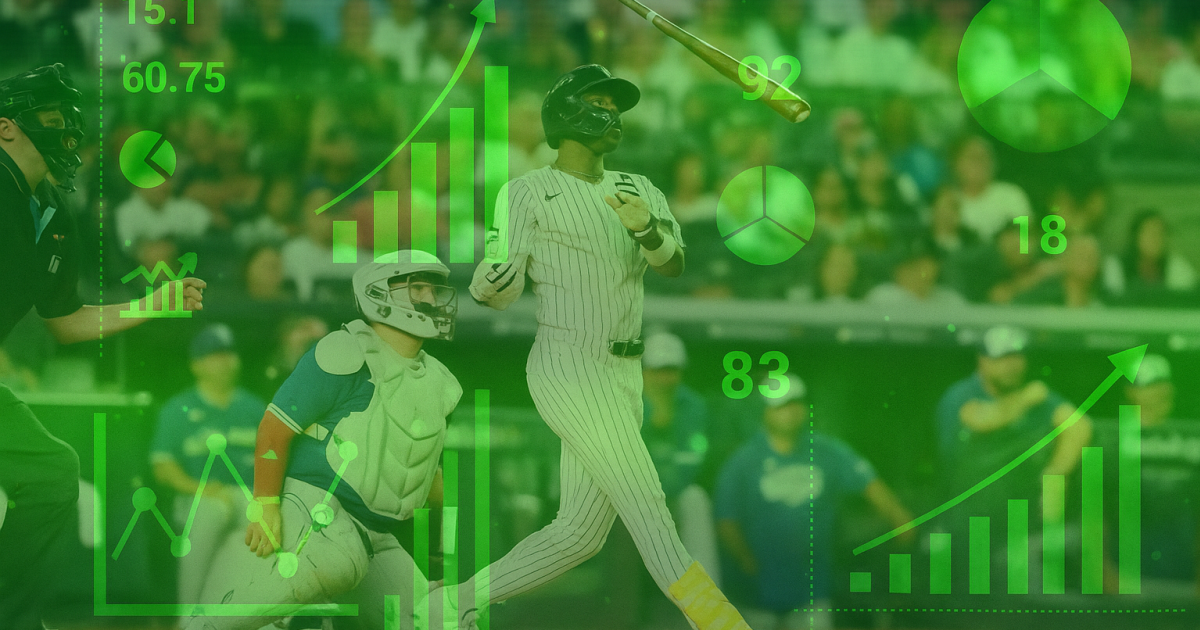Copyright Athlon Sports

How Rotisserie Leagues Work What is Rotisserie Baseball? Wow. This will be some boring stuff here, but here goes. Rotisserie baseball, widely called Roto, is a fantasy baseball game, meaning that participants manage a “team” composed of several baseball players and score points based on their players’ performances in real baseball games over a selected period of time. Teams are ranked versus other participants to determine standings and winners. Roto is a fantasy baseball game where the scoring method is Roto-style. Roto-style means Your league, the group of team owners, selects a group of statistical categories to play with. Each team gets one point plus one point for each opponent that you are better than in each statistical category. Each of those point totals is aggregated together for each team and they are placed in Standings order. The two charts below from the 2025 Fantasy Sports & Gaming Association Fantasy Baseball league show how it works. When leagues play Roto style fantasy baseball, they first choose what players will be eligible to play with in your league. There are three general choices for this: American League only (AL only), National League only (NL only), or Mixed (All players). There are usually rules of who can be added to a team as well regarding minor league players. Additionally, most leagues play partition the players into hitters and pitchers in order to decide statistical categories. Most leagues play with an equal number of categories for hitters and pitchers. It is described as 4×4 or 5×5 or 6×6 for the number of hitting categories and the number of pitching categories. Most common categories: 4×4: Hitting: batting average, home runs, runs batted in, stolen bases Pitching: wins, saves, earned run average, WHIP (walks + hits divided by innings pitched) 5×5 Hitting: batting average, home runs, runs batted in, runs scored, stolen bases Pitching: wins, saves, earned run average, WHIP (walks + hits divided by innings pitched), strikeouts 6×6 (usually used in head-to-head formats) Hitting: batting average, home runs, runs batted in, runs scored, stolen bases, OPS (on base percentage + slugging percentage) Pitching: quality starts, SOLDS (saves+holds), earned run average, WHIP (walks + hits divided by innings pitched), strikeout per nine innings Origins of Rotisserie Baseball The birth of “Roto”, from Baseball Seminars to Lunch at a New York French Restaurant Since the earliest days of baseball first using baselines in 1869, fans have wanted to make “dream teams”. Creating dream teams was not for competition but for fun with your friends. Until a Harvard graduate named William Gamson analyzed how to create games from the player performance or from simulated occurrences based on previous performances. In 1959, at University of Michigan, he delivered classes called the Baseball Seminars where students discussed creating teams of real baseball players for the purpose of competing. Another professor at University of Michigan, Robert Sklar, told the most important person for the future of fantasy sports, Daniel Okrent. Okrent spent a long time talking with his smart sports minded New York journalist friends to see what was possible. In December of 1979, Daniel Okrent wrote down the rules for a fantasy baseball game. In 1980, he gathered those friends together to talk about the game at La Rotisserie Francaise, a popular 52nd Street neighborhood french bistro. The founders later jokingly named their game after the restaurant. Rotisserrie (Roto for short) Baseball became popular in the mid 1980s with the publisher of Sport Magazine, Glen Waggoner publishing a book of the official rules for playing in 1984. Manual score-keeping to online platforms to rule changes In 1984, the personal computer was only 8% of all households in the U.S. There were no programs that could handle running these leagues. The solution was for enthusiasts to use accounting ledgers to track the statistics of the active players and calculate the standings which were updated weekly for the group to get together in person to make the next week’s moves and set their lineups. Early enthusiasts who were computer programmers wrote software to manage leagues. Access to them and since only 8% of households had computers, it was difficult to run your league. League management services began propping up to handle the growing craze. Leagues would be filed with a service. The service would provide weekly reports by fax or U.S mail to the participants who would then file their moves with those services by phone, fax or in person. In 1995, when the National Science Foundation freed the internet with funding from AT&T, MCI, and Sprint, telecommunications companies, many of the league management companies moved their services online and other services sprouted up including those we now know in the mainstream, CBS Sports (1996) and Yahoo! (1999). Setting Up and Playing Your First Roto League We want you to get started playing the game that we love. If you do not play Roto style fantasy baseball, there is no better time to get in the game. Find the team owners and decide how many people to play with The best leagues are the ones where all the team owners have similar knowledge of the game and a similar amount of time to dedicate to the playing of the game. Also, the better you know people the more likely this game is to strengthen those bonds and make the game more fun to play plus enhance real baseball games enjoyment. I always suggest starting with fewer teams and then expand after you are sure you have the right group. With Roto-style fantasy baseball the best number of teams to start with is ten teams. The best playing experience is twelve teams, but starting with ten is a great way to go. Choosing a platform and league type When choosing a platform it is important that it is a platform that your league wants to use. Many will have played fantasy football and it is not a bad idea to stay on the same platform that they already know. If your league is on Yahoo!, stay there. For Roto style, I believe the RTSports.com handles all the flexibility and attention to Roto leagues rules and growth into more competitive leagues. The so-called expert leagues that I play in use that platform for three of the four that I play in. Tout Wars uses OnRoto which is one of the original league management online systems that was mentioned above so they have solid features. Draft strategy basics for roto When starting out playing, use the KISS principle: keep it simple, stupid. Managing your job, family and knowing every player in Major League Baseball and the top 200 prospects is almost impossible for most people who want to play. In 2002, working with Glenn Colton, we came up with the SMART system. The acronymThis system allows a fantasy baseball player to “eliminate” players from my potential draft pool based on some rules that we studied over the years to find trends. Are they perfect? No, but it helps us manage rewarding jobs, family and still play this great game at a high level. For beginners, it is less important, but we will post the eliminated players and why along with easy to use Roto and Points boards to help you draft. One thing that I highly recommend is to get players that you like or are fun to root for. I like to have players who are athletic so that they will be in the highlights a lot. Also, the big home run hitters are more fun to watch. You can WIN and have fun. Stay tuned for more on the SMART system and other methods to minimize or eliminate anything that feels like work and have as much fun as possible. Mid-season management: waivers, trades, streaming After you have a set of players to make up your team, you can make changes during the season. Waivers or blind bidding free agent acquisition are two ways for you to add players for injured ones or simply replace players on your roster that are not performing well. With waivers, it acts as a draft for all those who put in picks. For the blind bidding, each team owner puts in bids that the computer decides who wins them and makes the changes to the owners’ teams. When you don’t like or want to root for someone on your team, you can trade him to another team and take player(s) that that team owner doesn’t want anymore. Many people try to “value” trades to make sure that they are even. However, trades in Roto-style are more difficult to evaluate as a team may need certain statistics that one player provides more than the value of the player themselves. Fun over winning, but winning is more fun For me, I play all fantasy sports and games for fun. With all the challenges that we have in this world to be a good person, raise a family, contribute to society and deliver value at your job, we can sometimes see fantasy sports as a way to make money. Honestly, for me, it is all about the fun and the kind of people who play. All usually sports knowledgeable passionate kind people who just want to compete and make the games more fun to watch. So have more fun…play Roto-style fantasy baseball today! Get in the Game. Baseball is life.



